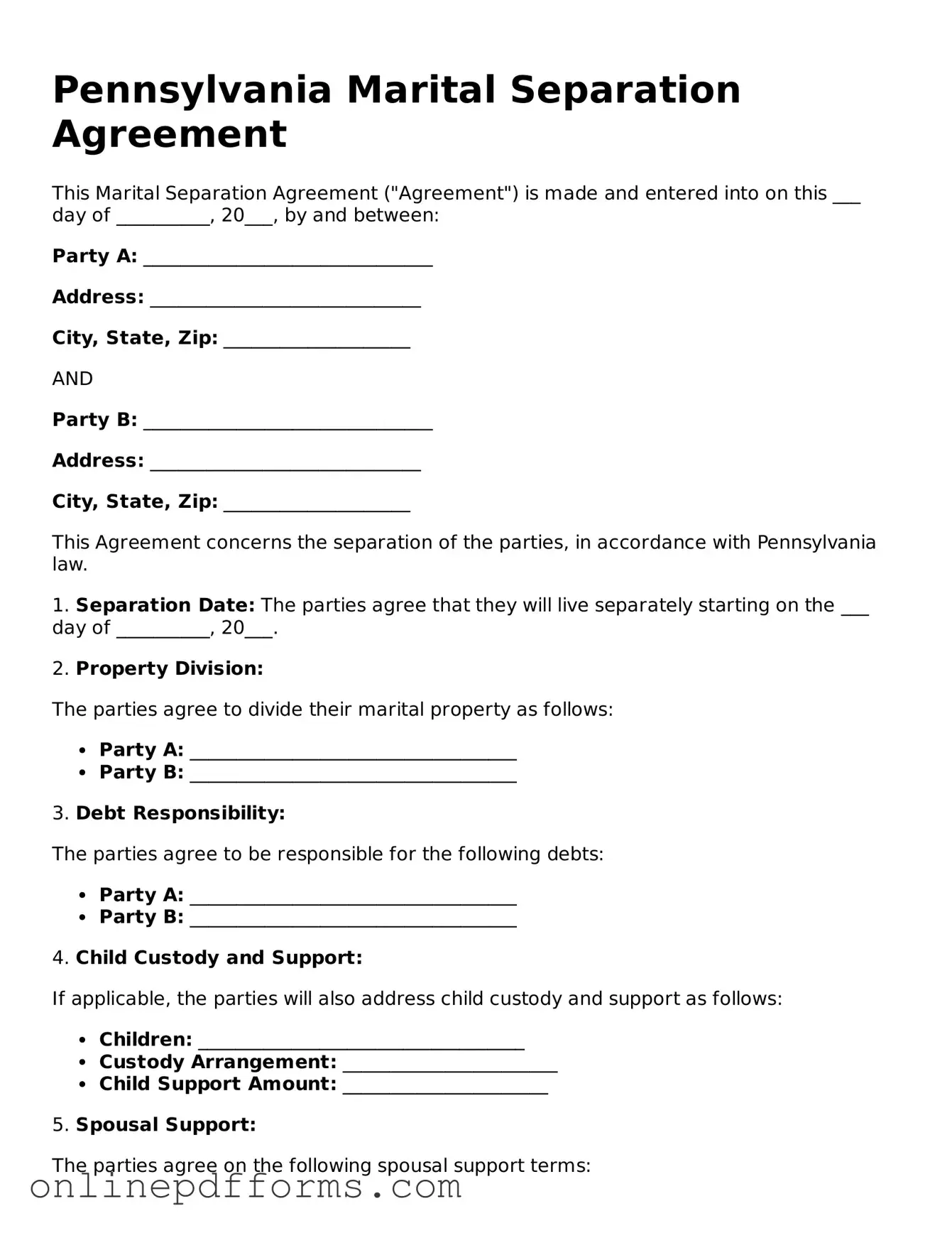The Pennsylvania Marital Separation Agreement is similar to a Divorce Settlement Agreement. Both documents outline the terms of how a couple will divide their assets, debts, and responsibilities. While a Marital Separation Agreement is used when a couple decides to live apart without officially divorcing, a Divorce Settlement Agreement is finalized once the divorce process is complete. Both documents aim to provide clarity and prevent disputes, ensuring that both parties understand their rights and obligations.
Another document comparable to the Marital Separation Agreement is a Child Custody Agreement. This agreement specifically addresses the arrangements for children, including where they will live, visitation schedules, and how decisions about their upbringing will be made. Like the Marital Separation Agreement, a Child Custody Agreement seeks to establish clear terms to protect the interests of the children involved, ensuring that both parents are on the same page regarding their responsibilities.
The Property Settlement Agreement is also similar in nature. This document focuses on the division of property and assets between spouses. While the Marital Separation Agreement may include property division, a Property Settlement Agreement provides more detailed terms regarding how specific assets will be divided. Both documents are designed to minimize conflict and provide a clear framework for asset distribution.
For couples navigating the complexities of separation or divorce, resources like the arizonaformspdf.com can provide essential documentation to ensure clarity and legality in agreements. These forms assist in outlining rights and obligations while offering a structured approach to discussing matters such as property division, custody, and financial support.
In addition, a Cohabitation Agreement shares similarities with the Marital Separation Agreement. While typically used by unmarried couples living together, a Cohabitation Agreement outlines the rights and responsibilities of each partner regarding property, finances, and other shared aspects of their lives. Both agreements help prevent misunderstandings and disputes by clearly defining expectations and obligations.
The Prenuptial Agreement, or prenup, is another document that bears resemblance to the Marital Separation Agreement. A prenuptial agreement is established before marriage and outlines how assets and debts will be handled in the event of a separation or divorce. Similar to a Marital Separation Agreement, it aims to protect both parties and provide a clear understanding of financial matters, though it is created at a different stage in the relationship.
Lastly, a Separation Agreement from another state may also be similar to the Pennsylvania Marital Separation Agreement. While laws and specific terms may vary by state, the general purpose remains the same: to outline the terms of separation between spouses. Both types of agreements aim to address issues such as property division, child custody, and financial responsibilities, ensuring that both parties have a clear understanding of their rights and obligations during the separation process.
